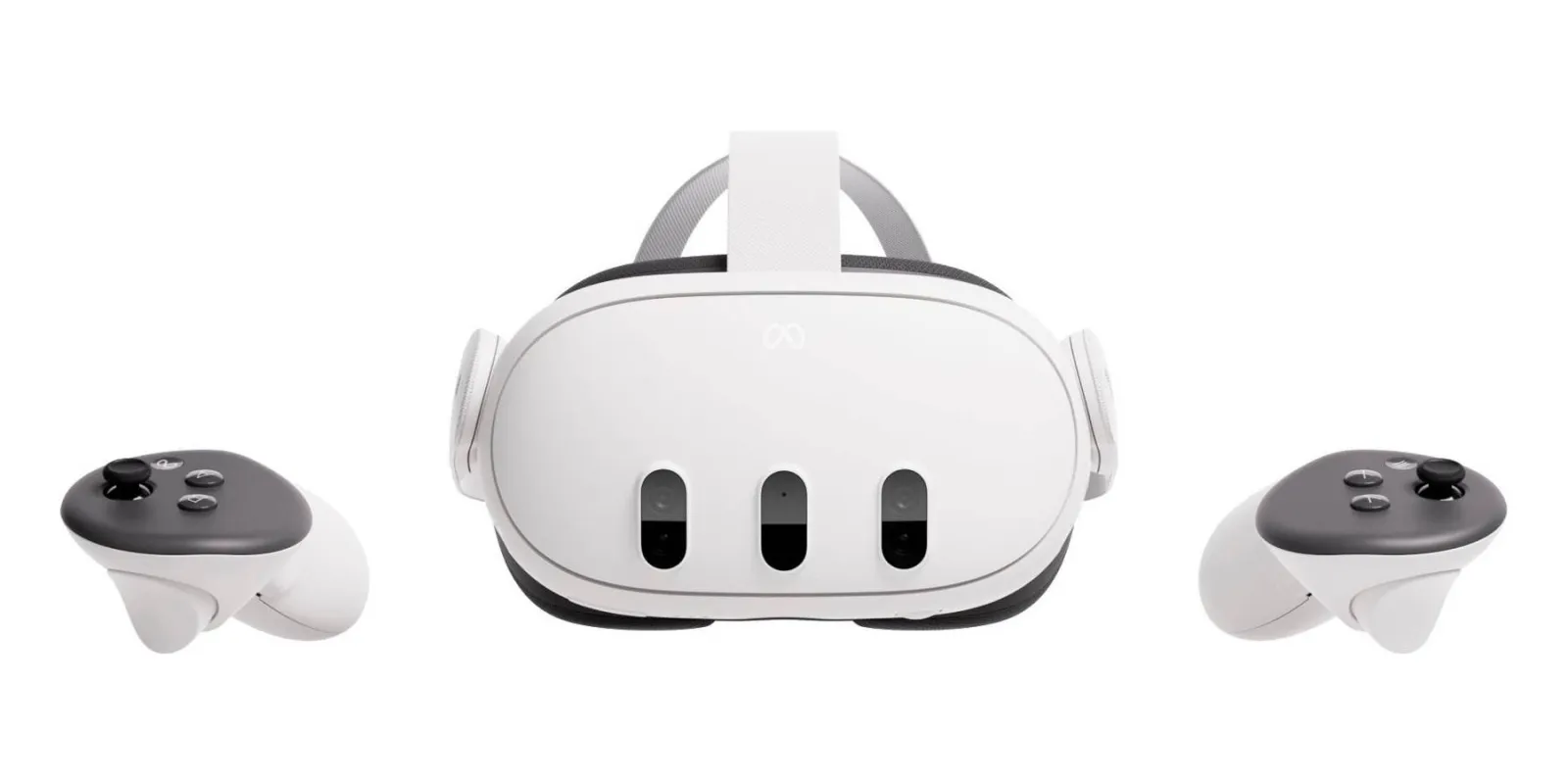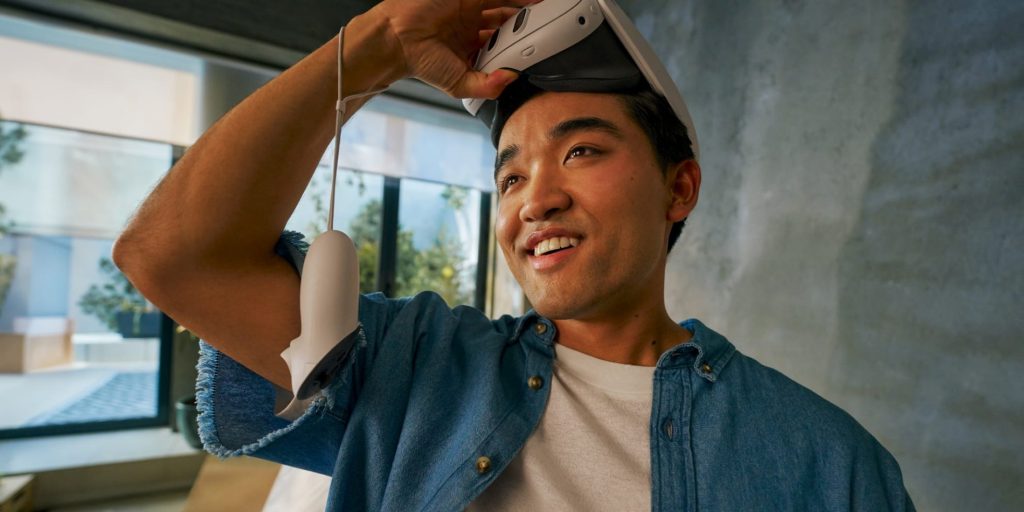
Meta has announced the Meta Quest 3, the successor to the VR headset that launched as Oculus Quest 2. The Android-based headset brings a much faster chip, updated hardware, and also cloud gaming support.
Launching on October 10, the Meta Quest 3 is a VR headset that also brings XR (mixed reality) functionality to the forefront. Compared to the hit Quest 2, the new generation brings a few key upgrades, which start with the hardware itself, actually now heavier at 515g. Meta does claim, though, that it is more comfortable to wear and is 40% slimmer.
Of course, there are also new controllers: “Touch Plus.” These controllers ditch the sensor ring from Quest 2 and have improved haptics, but are still powered by AA batteries.
Perhaps more impactful are the changes to the display hardware. The lenses have been upgraded with the “pancake” style that first debuted on the Meta Quest Pro, with a horizontal field-of-view at 110 degrees and vertical at 96 degrees, roughly 15% improved over Quest 2. The displays are now 2064 x 2208, but still using LCD.
Under the hood, Meta Quest 3 is powered by the updated Snapdragon XR2 Gen 2 processor, which Meta says doubles the graphics performance and even stronger than the Quest Pro.
The cameras are also upgraded, with new color cameras that are better suited to XR passthrough compared to the black and white cameras of the Quest 2. Meta has also added a new “blended” mode that lets you play games while also still seeing parts of the world around you.

The same backlog of VR content remains in place, with new games incoming such as Assassin’s Creed Nexus and Asgard’s Wrath. Xbox Game Pass with cloud gaming is also coming to the Quest 3, and set to launch in December. There’s no word on if that will also come to Quest 2.
Meta Quest 3 will launch on October 10 for $499 for 128GB, with the 512GB model at $649.
FTC: We use income earning auto affiliate links. More.



Comments